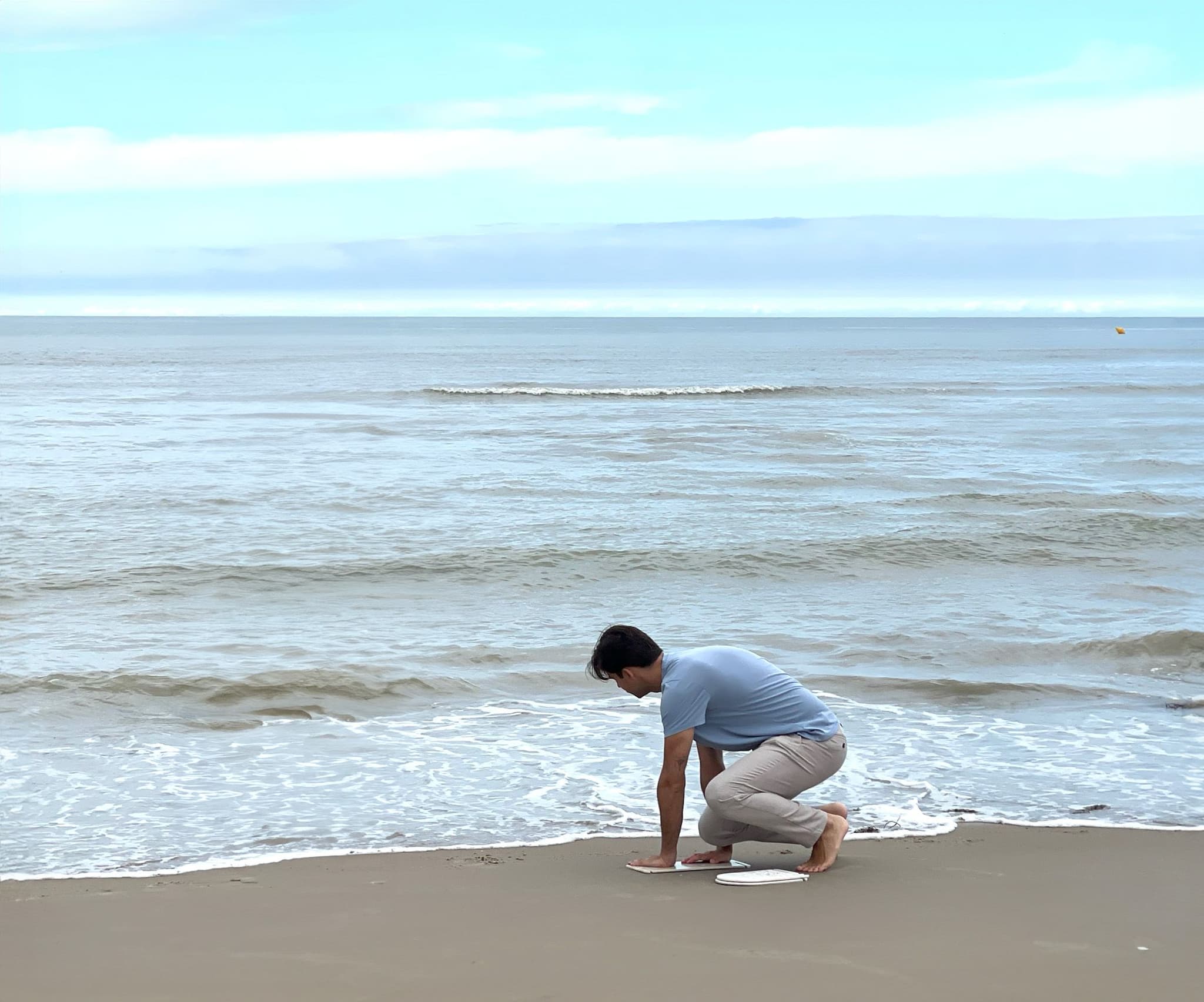Can you share the inspiration behind "Effet Mer" and the process of turning recycled plastic from hospital waste into a medium for environmental awareness?
My practice revolves around contemporary issues and the desire to improve the daily lives of users. When a Bordeaux gallery (La Galerie des Curiosities) contacted me to collaborate with a company that develops recycled plastic from hospital waste, I immediately wanted to create an object to raise awareness of the impact of plastic on the environment and particularly marine life. I wanted to design an object useful for everyone whose dual function is to deliver a message of prevention poetically.

How do you measure the impact of such projects on public awareness and behavior towards plastic use and marine conservation? Do you plan to do more of these initiatives?
Effet Mer was designed to be a manifest object. Currently exhibited at the Cité des Sciences in Paris as well as in various online galleries, this object arouses interest through its aesthetics and its narrative. If this project can raise awareness among a few people, the mission will already be greatly accomplished. I continue my experiments and my commitment to respond to environmental issues.
Could you discuss any challenges you faced in sourcing, processing, and transforming recycled plastics into durable and aesthetically pleasing materials?
Recycled plastic is a material that requires numerous experiments before obtaining a stable material. In my creative process, I had to integrate this random material with its imperfections which offer unique colors. That’s the beauty of giving a second life to a material.

Beyond "Effet Mer", how have you incorporated the principles of sustainability and recycling into other set design or scenography projects for luxury brands?
From a durable object to an ephemeral scenography, the choice of materials comes very early in my creative process. I am concerned about the environmental impact that my creation can have. I mainly use recyclable materials and I sometimes compose scenographies only with recovery, recycled materials, transformed objects…
What role do you believe the luxury industry can play in advancing sustainable practices and reducing plastic pollution, especially through creative projects like yours?
Users want to consume better and are sensitive to ecology. Luxury companies must integrate these issues and seek solutions to meet demand. Some have developed recycling services, while others are rethinking their production processes to produce locally, with fewer production steps.

Looking forward, how do you see the evolution of sustainable materials and practices in set design and scenography, and what challenges and opportunities do you anticipate in expanding the reach and impact of projects like "Effet Mer"
I think that to have the lowest impact you need to use the least amount of material. There is no secret. And then succeed with very little material in having a strong impact. This is what makes good design.
Effet Mer is intelligent in what it says. I am currently working to make it accessible to everyone and I hope that it can raise awareness among as many people as possible.













